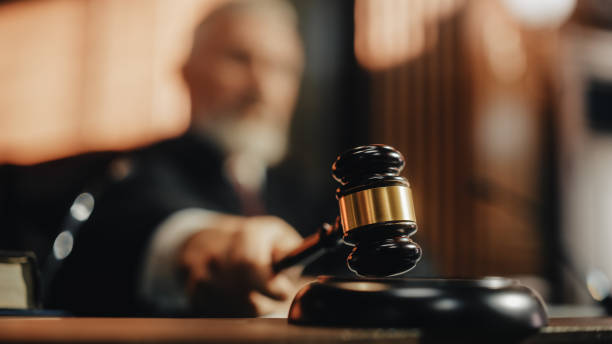Jury Nullification: The Silent Power in America's Courtrooms
Introduction: In the realm of American jurisprudence, an often overlooked yet potent force exists: jury nullification. This controversial legal concept allows jurors to acquit defendants despite clear evidence of guilt, effectively nullifying the law in specific cases. As we delve into this complex topic, we'll explore its history, legal implications, and ongoing debates surrounding its use in modern courts.

Legal Status and Controversy
Despite its long history, jury nullification occupies a contentious space in modern American law. While not explicitly illegal, courts have consistently ruled that jurors have no right to be informed about nullification. This has led to a peculiar situation where jurors possess the power to nullify but are often unaware of it. The Supreme Court’s stance on jury nullification has evolved over time, with landmark cases such as Sparf v. United States (1895) setting precedents that continue to influence current interpretations.
The Mechanics of Jury Nullification
At its core, jury nullification occurs when jurors choose to acquit a defendant despite believing they are guilty under the law. This decision can stem from various factors, including moral objections to the law itself, disagreement with its application in a specific case, or a belief that the punishment is disproportionate to the crime. The process relies on the jury’s right to reach a verdict without explanation and the double jeopardy clause, which prevents retrial after acquittal.
Arguments For and Against Jury Nullification
Proponents of jury nullification argue that it serves as a crucial democratic check on government power, allowing citizens to directly influence the application of laws. They contend that it can prevent unjust convictions and promote social change by challenging outdated or oppressive legislation. On the other hand, critics warn that jury nullification can lead to inconsistent application of the law, undermine the rule of law, and potentially result in discriminatory outcomes based on jurors’ personal biases.
Contemporary Examples and Implications
In recent years, jury nullification has gained attention in cases involving drug offenses, assisted suicide, and politically charged issues. For instance, some jurisdictions have seen increased acquittals in marijuana possession cases, reflecting changing public attitudes towards cannabis use. This trend raises questions about the role of jury nullification in shaping policy and whether it serves as a barometer for societal values in conflict with existing laws.
The Ethical Dilemma for Legal Professionals
Attorneys and judges face a complex ethical landscape when it comes to jury nullification. While lawyers are generally prohibited from explicitly encouraging nullification, some argue for more latitude in discussing the concept during trials. Judges, tasked with ensuring fair proceedings, must balance providing accurate legal instructions with avoiding any suggestion of nullification as a valid option. This tension highlights the ongoing struggle to define the boundaries of jury power within the legal system.
Potential Reforms and Future Outlook
As debates surrounding jury nullification persist, various reform proposals have emerged. Some advocate for explicitly informing jurors about their nullification power, while others suggest limiting its scope to certain types of cases. Alternatively, some legal scholars propose focusing on legislative reforms to address the underlying issues that often motivate nullification. The future of jury nullification in American law remains uncertain, but its potential to shape legal outcomes and influence public policy continues to spark robust discussion among legal professionals, policymakers, and citizens alike.
In conclusion, jury nullification represents a complex and often misunderstood aspect of the American legal system. As society grapples with evolving norms and challenging legal questions, the role of jury nullification in shaping justice and democracy will likely remain a subject of intense debate and scrutiny. Understanding this powerful yet controversial tool is crucial for anyone seeking to comprehend the nuances of American jurisprudence and the ongoing evolution of our legal landscape.





